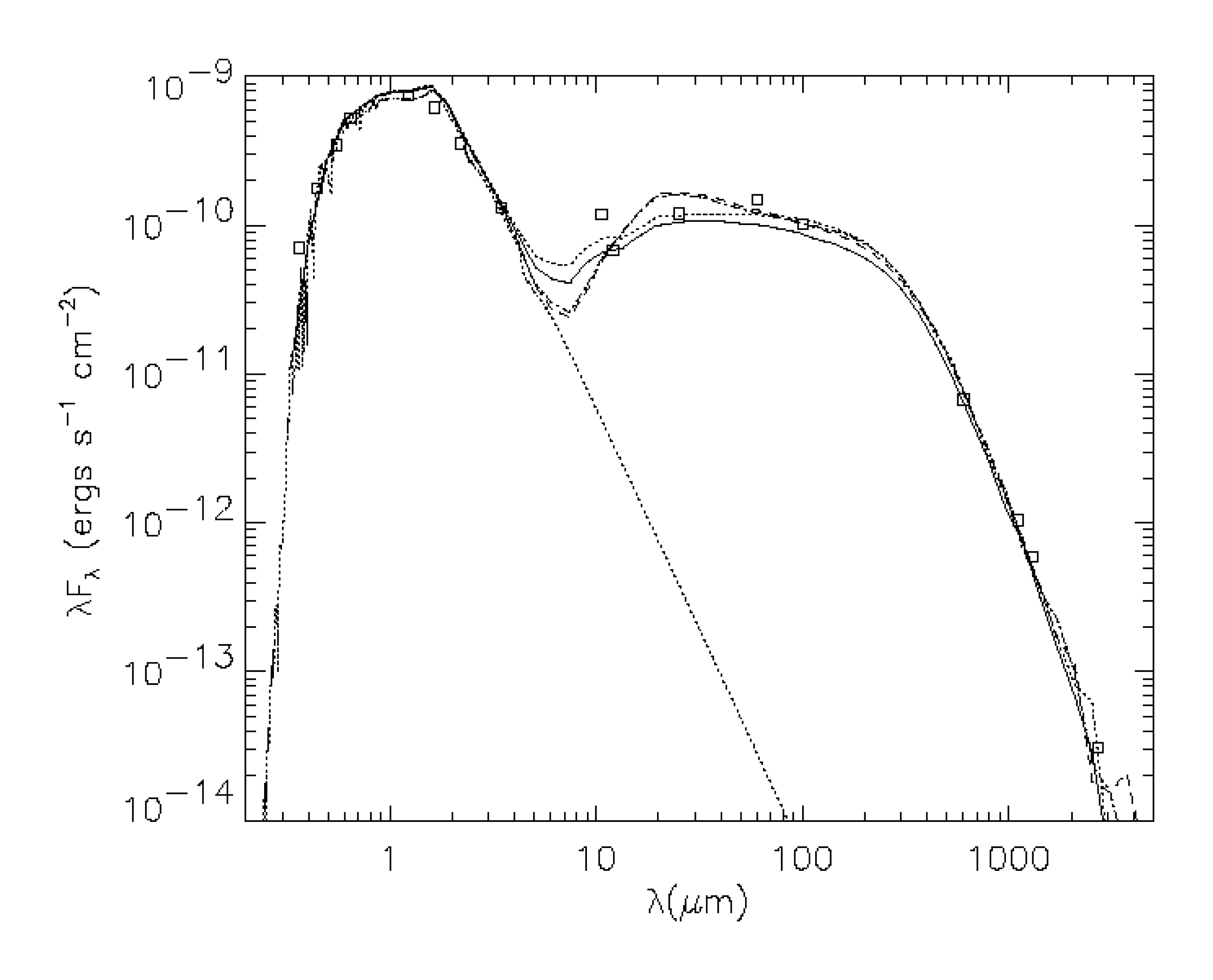GM Aurigae's SED

GM Aurigae's spectral energy distribution (SED) computed using various
density profiles as input to the Monte Carlo radiation transfer. The density
profiles all have gaps in the inner regions due to the presence of an embedded
planet. Planets with large masses (dashes and dash-dot lines)
tend to produce very deep gaps with very little
material in the inner regions of the disc. The reduction in the near infra-red
excess is therefore quite substantial and there is a corresponding enhancement at
slightly longer wavelengths. Planets with slightly lower masses (dotted and solid
line) produce less
significant gap, and consequently less significant reductions in the near infra-red
flux and smaller enhancements at the longer wavelengths. The fit to the data
points (open squares) suggest that the SEDs due to the slightly lower planet masses
fit the data slightly better than that due to the heavier planets. More observations
between 3 and 20 microns will be required to determine if the planet mass
can actually be determined from SED measurements.
|
|